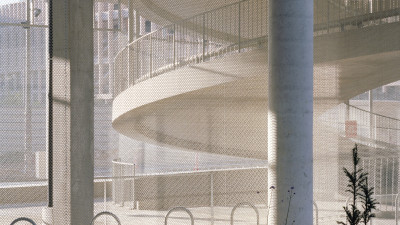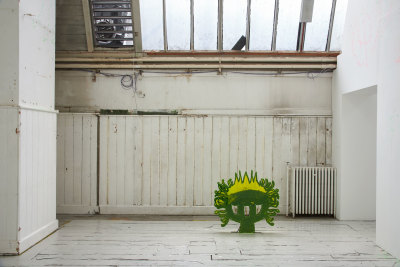Georgian Britain, Crystal Palace and the influence of High-Tech
Georgian Britain, Crystal Palace and the influence of High-Tech
Our pick of this month's architecture news and events
By Owen Hopkins
Published 4 March 2014
From derelict Detroit to the return of Crystal Palace: the biggest stories in architecture this March.
-
The Brits Who Built the Modern World
RIBA, until 27 May 2014
At the risk of falling into tub-thumping clichés, architecture is one area where Britain punches well above its weight. This is arguably only a phenomenon of the last thirty or so years and, in particular, tied to five figures: Richard Rogers RA, Norman Foster RA, Nicholas Grimshaw RA, Michael Hopkins RA and Terry Farrell. A small, densely curated exhibition at the RIBA explores the origins of their architecture – at one time or another corresponding to what is popularly known as ‘High-Tech’ – and how they became some of world architecture’s leading lights.
-

The Brits Who Built The Modern World
Photo: Philip Vile
-
Crystal Palace reborn
The ‘High-Tech’ generation were heavily inspired by engineering triumphs of the Victorians: almost anything by Brunel, Barlow’s magnificent train shed at St Pancras and, especially, Joseph Paxton’s Crystal Palace. After the Great Exhibition in 1851, the Palace was moved to Sydenham in south London where it stood until destroyed by fire in 1936. Last year, we heard that the Crystal Palace would be reborn as an undefined cultural and exhibition centre paid for by a Chinese developer. The other week the shortlisted architect were announced and fittingly include Rogers and Grimshaw, alongside Haworth Tompkins, Marks Barfield, Zaha Hadid RA and David Chipperfield RA, who is currently also working on the Academy’s masterplan.
-

Crystal Palace rebuild
Image by Vyonyx
-
The battle of Smithfield
Tempers are flaring at the public inquiry into the proposed redevelopment of Smithfield General Market. Intriguingly, the plans, drawn up by John McAslan architects, are supported by English Heritage, but opposed by both Save Britain’s Heritage and the Victorian Society. Irked by a particular line of questioning, McAslan stormed out of the first day of the inquiry, though soon returned to defend his scheme for Henderson Global Investors. Meanwhile, the arguments are raging on in the press, with the project becoming a lightning rod for broader debates about how to deal with the redevelopment of historic fabric, the relationships of such projects to local communities and developers’ money-making priorities.
-

John McAslan + Partners, proposal for Smithfield Market
-
William Kent: Designing Georgian Britain
Victoria and Albert Museum, 22 March – 13 July 2014
Over at the V&A, an exhibition opening later this month throws the spotlight on William Kent, one of Britain’s greatest designers. I say ‘designer’ because Kent was an architect, interior designer, painter and landscaper gardener. He was one of the leading lights of the Palladian style that sought to re-create the architecture of Ancient Rome, as mediated by the Italian Renaissance architect, Andrea Palladio. Kent worked for Lord Burlington at the RA’s own Burlington House, where the Saloon is one of the most perfectly preserve Kent interiors. Other works nearby include Horse Guards and the Old Treasury, but Kent’s masterwork is undoubtedly Holkham Hall in Norfolk, which is given particular prominence in the exhibition.
-
Video
-
Ruin Lust
Tate Britain, 4 March – 18 May 2014
Kent was one of the first architects to experiment with Gothic styles, exploring the associations they held with natural British liberty. During the eighteenth century medieval ruins became an increasing source of fascination for a number of artists, including JMW Turner RA. From images of derelict Detroit to the eery abandoned town of Pripyat near Chernobyl, today ruins continue to capture and entrance our imaginations. This exhibition, just opened at Tate Britain, shows the varied creative possibilities that artists, architects and photographers have seen in ruins, from the eighteenth century to the present day.
-

Jane and Louise Wilson, Azeville, 2006.
Photograph, gelatin silver print on paper, mounted onto aluminium. 1800 x 2900 mm. © Jane and Louise Wilson, courtesy 303 Gallery, New York.







